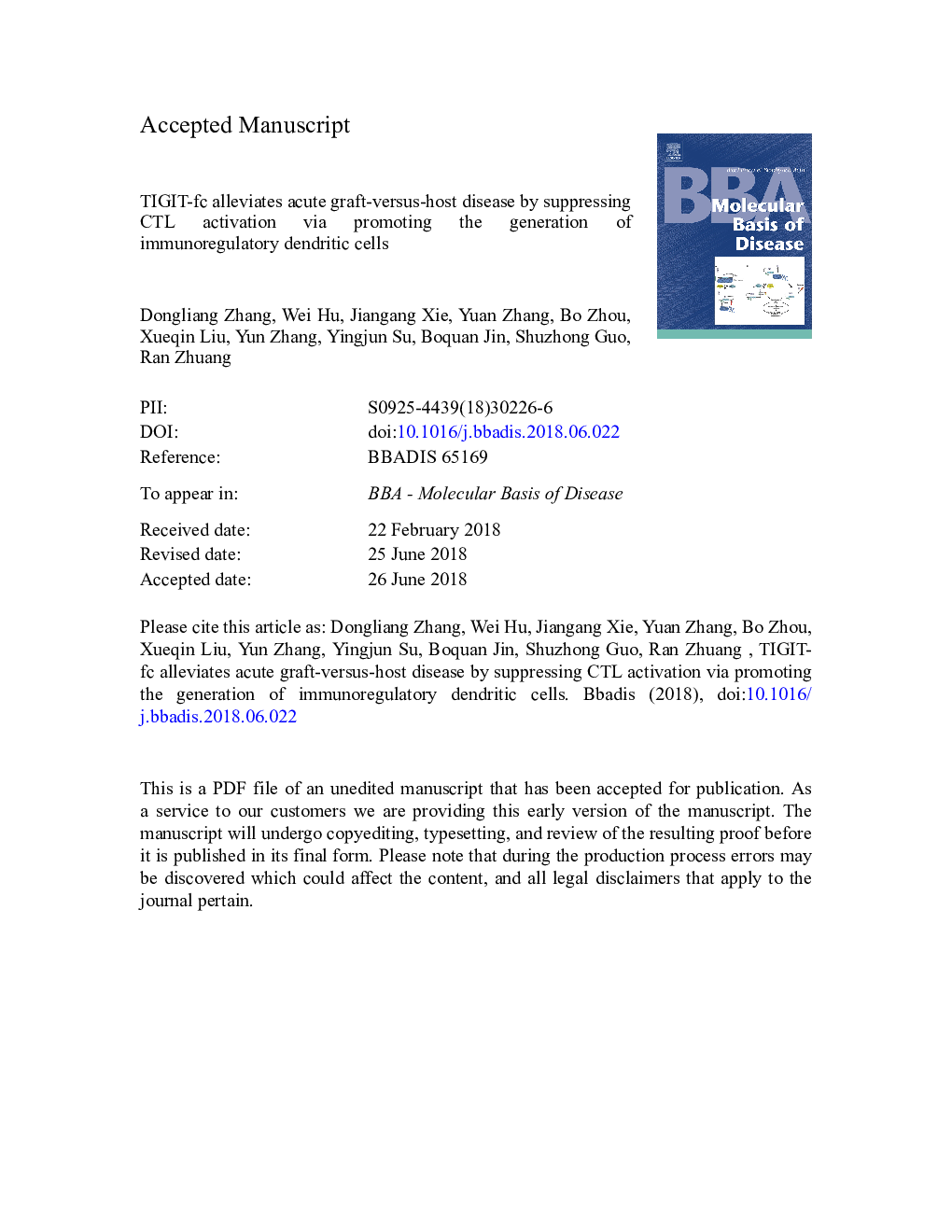| Article ID | Journal | Published Year | Pages | File Type |
|---|---|---|---|---|
| 8258361 | Biochimica et Biophysica Acta (BBA) - Molecular Basis of Disease | 2018 | 29 Pages |
Abstract
Graft-versus-host disease (GVHD) is the most common complication and major limitation of allogeneic hematopoietic stem cell transplantation. The CD226/TIGIT-CD155 signal is critical for the cross-talk between T cells and dendritic cells (DCs). Studies have shown that blockade of the CD226-CD155 interaction, using an anti-CD226 antibody, can significantly ameliorate GVHD. It has also been reported that a TIGIT-Fc fusion protein exerts immunosuppressive effects by binding to CD155 on DCs. Here, we used a mouse allogeneic acute GVHD model to explore the therapeutic potential and mechanism of action of TIGIT-Fc. C57/BL6 and Balb/c mice were used as hematopoietic cell graft donors and recipients, respectively. In the TIGIT-Fc-treated mice, GVHD symptom occurrence and mortality were delayed compared to that in isotype control group mice. Histopathological analyses revealed that following TIGIT-Fc treatment, liver and small intestine tissue damage was reduced with minimal lymphocytic infiltration. The percentage of CD8+IFN-γ+ and CD8+ granzyme B+ cells significantly decreased in the TIGIT-Fc group. Moreover, treatment with TIGIT-Fc, even after the onset of GVHD, ameliorated symptoms and prolonged survival. TIGIT-Fc also inhibited CD8+ T cell activation in vitro; this was dependent on the presence of CD155 on bone marrow-derived dendritic cells (BMDCs) and on IL-10 production. In addition, TIGIT-CD155 ligation triggered both Erk phosphorylation and STAT3 nuclear translocation. These data indicate that TIGIT plays an important role in the development of GVHD and is an ideal molecular target to treat acute GVHD.
Keywords
Related Topics
Life Sciences
Biochemistry, Genetics and Molecular Biology
Ageing
Authors
Dongliang Zhang, Wei Hu, Jiangang Xie, Yuan Zhang, Bo Zhou, Xueqin Liu, Yun Zhang, Yingjun Su, Boquan Jin, Shuzhong Guo, Ran Zhuang,
